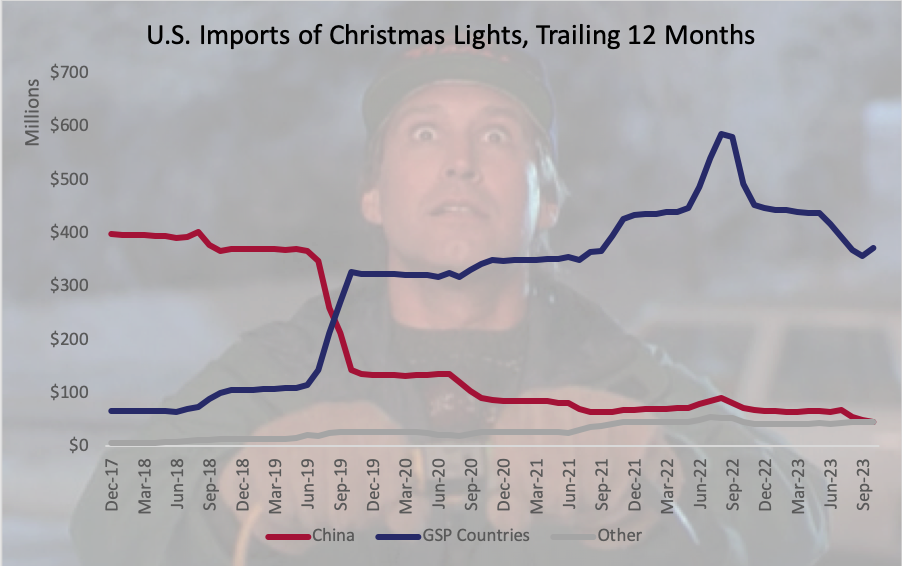Watching National Lampoon’s Christmas Vacation is a holiday tradition for many. Sadly, writing about how much Clark Griswold would hate GSP expiration has become a bit of a tradition itself, with this being the 3rd straight year that Americans are stuck paying extra tariffs on Christmas lights due to Congress’ continued failure to renew the Generalized System of Preferences (GSP) program.
As a result of GSP expiration 3 years ago, fun, old-fashioned family Christmas lights have faced up to $100 million in extra tariffs. Those high costs are the result of two main factors: 1) regular tariffs on Christmas lights are high (8%), and 2) GSP countries have become the dominant suppliers as companies seek alternatives to Chinese suppliers, which face 33% tariffs (8% regular tariff + 25% Section 301 tariff).

If U.S. policymakers want to see shifts out of China, letting GSP expire is a no good, rotten way to show it. As recently as 2017, China accounted for $399 million out of $472 million (84%) of all U.S. Christmas lights. Since GSP expired on December 30, 2020, American companies have imported over $1.25 billion in Christmas lights from GSP countries. That works out to over $9 in imports from GSP countries for every $1 from China — and unthinkable amount just 5-6 years ago. That helps explain why the House China Select Committee recently endorsed GSP renewal in its policy recommendation. Yet GSP remains expired and each shipment of twinkling holiday cheer gets hit with an 8% tax.
This shouldn’t be hard: GSP’s support is so broad and bipartisan that no sitting Member of the House of Representatives voted against GSP renewal when it last came up in 2018. And yet GSP expiration is about to enter year 4 and American companies already have paid well over $3.2 billion in extra tariffs.

While we definitely plan to watch Christmas vacation again in 2024, hopefully we won’t have to write another post like this.
